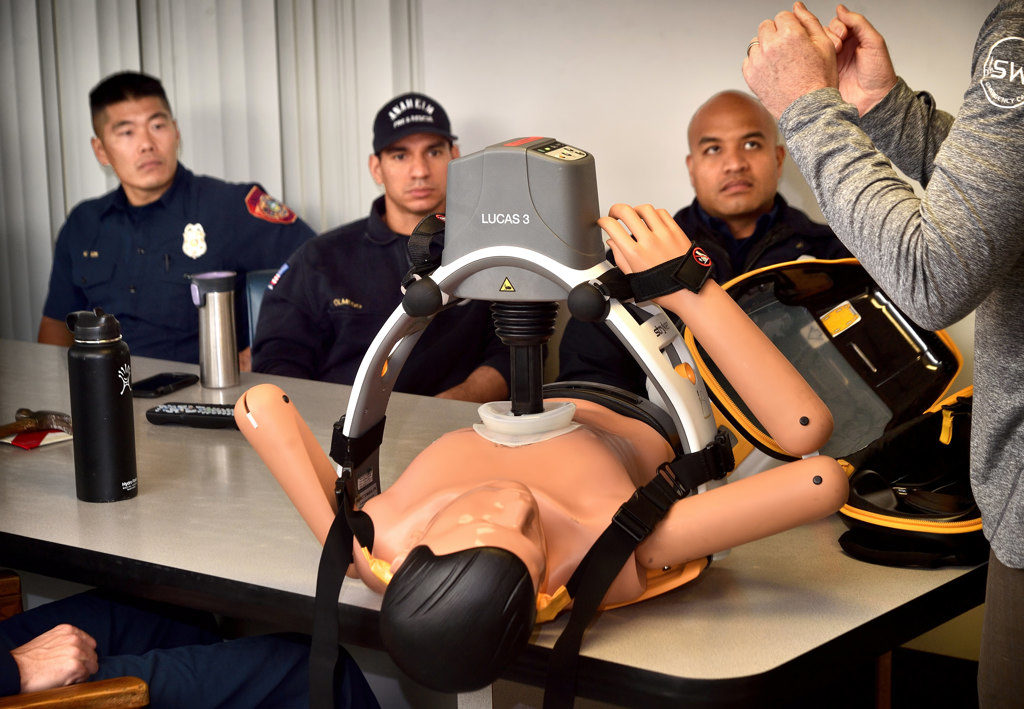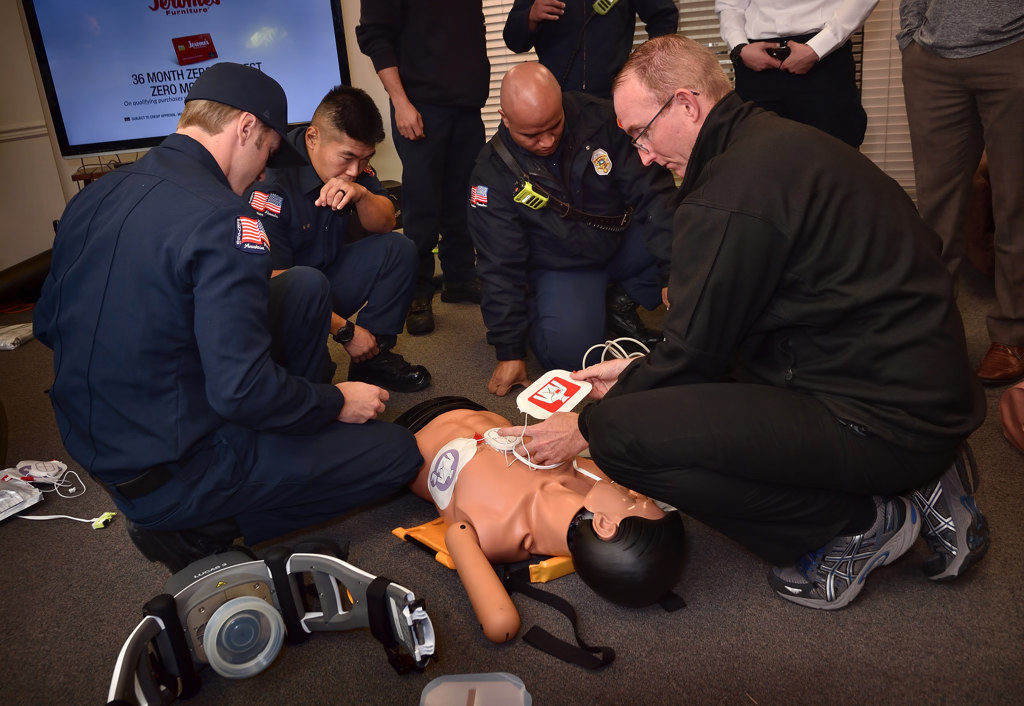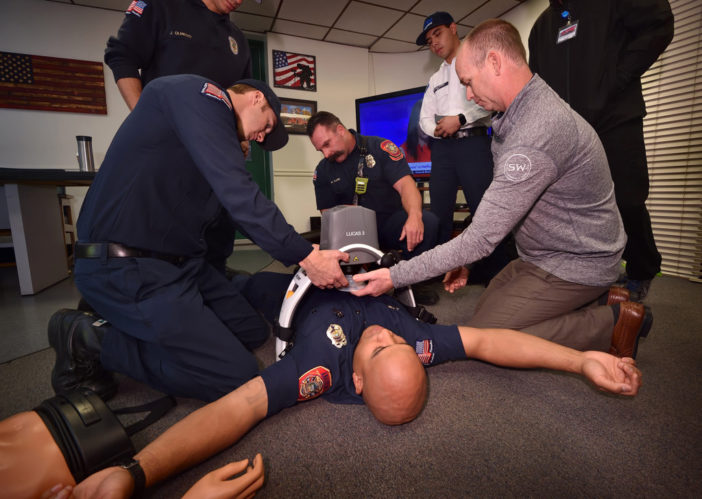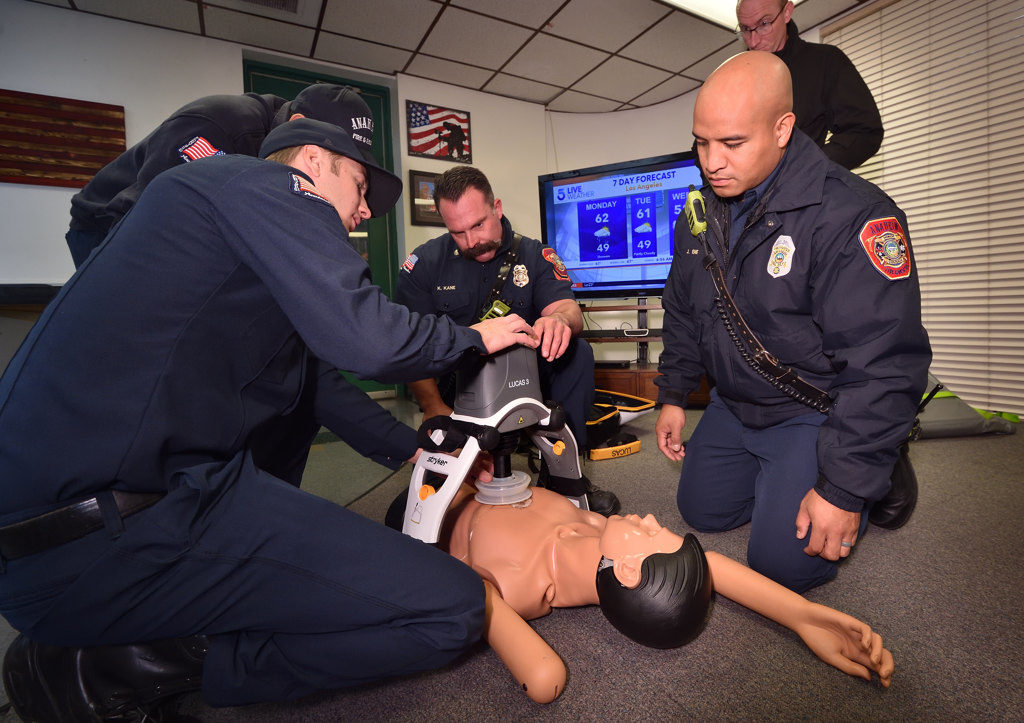Anaheim Fire and Rescue is taking life saving to a new, more efficient level.
The agency, along with other fire agencies in the county, is equipping its personnel with the Lucas 3, Version 3.1 Chest Compression System, a device that can potentially save the lives of patients in cardiac arrest by delivering unabated chest compressions.
Starting Jan. 1, every one of Anaheim’s dedicated ambulances responding within AF&R’s jurisdiction was equipped with the Lucas 3.
“The county is the first in the country to mandate that fire agencies have CPR devices,” Anaheim Fire Cpt./Paramedic Dave Barry said. “I think in the future it will go nationwide, but we are the first.”
The battery-powered system eliminates the interruptions that can occur when paramedics have to carry a patient on a stretcher, change positions, or become fatigued during lengthy CPR.

Anaheim Fire & Rescue firefighters (from left) Woo Kim, Jericho Olmedo, and Jeremy Ene watch as Ryan Lovelady of Stryker, a medical technology company, demonstrates the use of the new Lucas 3 chest compression pump designed to aid first responders in performing CPR in the field and during transportation to a hospital.
Steven Georges/Behind the Badge
Delivering consistent compressions at the recommended depth and rate offers several advantages over the traditional, manual method of performing chest compressions during cardiopulmonary resuscitation (CPR), said Dr. Robert Katzer, supervising physician for Anaheim Fire & Rescue.
“It’s been established that when you are moving patients upstairs, downstairs, or en route to the hospital, the quality of the CPR, no matter how good the provider is, is going to decrease,” said Katzer, who oversaw a training session with the Lucas 3 on Dec. 23 at Station 8. “This allows us to provide high-quality CPR upstairs, downstairs … in movement. It allows us to provide CPR in an ambulance while it’s moving, while providers have their seatbelt on, so it is a consistency of CPR in the field environment plus a provider safety benefit.”
The outcome of higher-quality CPR is an increased likelihood of a patient getting a pulse back and resuming heart function, the doctor said.
The nearly 18-pound device can apply 102 compressions per minute and operates by mechanically depressing a suction cup to the patient’s chest and then recoiling back to the original position.
“We’ve done a couple of trials throughout the county and this device has proven to be really user friendly, really easy to clean, and gets improved ROSC (return of spontaneous circulation) rates in other departments that have been using it,” Barry said.

Anaheim Fire & Rescue Physician Supervisor Dr. Robert Katzer (right) instructs firefighters Dustin Sola, left, Woo Kim, and Jeremy Ene on using a portable defibrillator used out in the field during a training session at AF&R Station 8.
Steven Georges/Behind the Badge
The Lucas 3 also allows for the wireless transmission of data related to the CPR rescue efforts, which can then be used to compile a report detailing compression time, rates, and ratio.
“It’s a good thing for us because it’s really going to increase our safety,” Barry said. “We can’t be seat belted in the back of an ambulance when we are doing CPR. This way, if we’re transporting a patient, compressions are consistent the whole time. This device is a game-changer for EMS.”
 Behind the Badge
Behind the Badge




